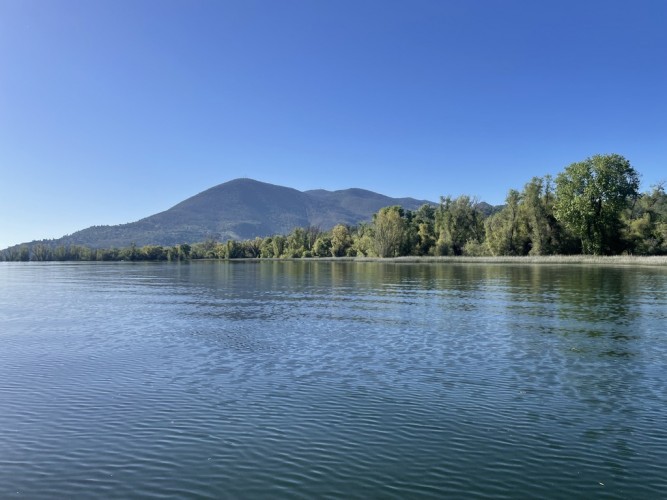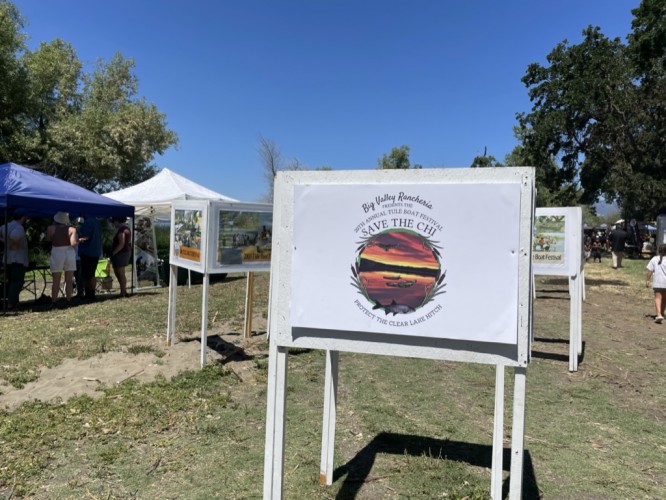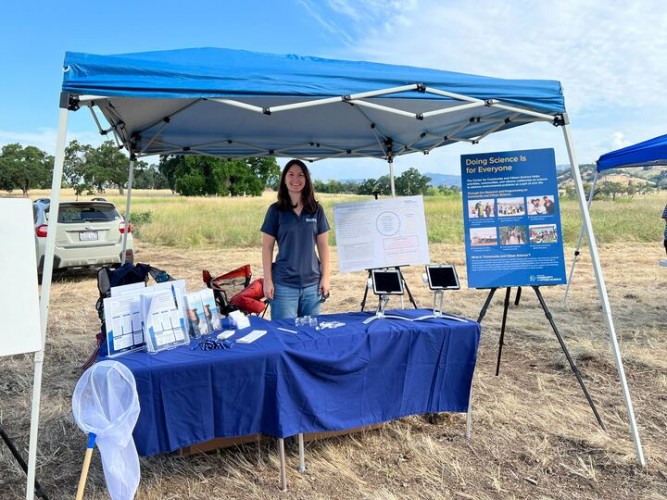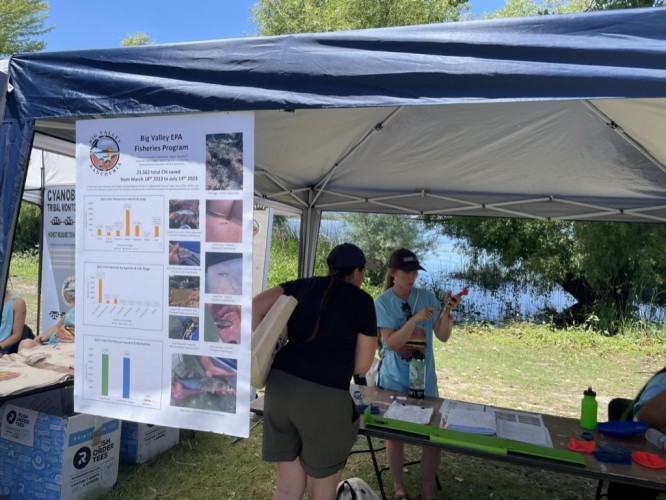Project Update: Clear Lake Reflections
 Singing, dancing, eating, swimming,
paddling, greeting: summer is an amazing time to be out at Clear
Lake!
Singing, dancing, eating, swimming,
paddling, greeting: summer is an amazing time to be out at Clear
Lake!
July marks the halfway point of the Blue Ribbon Committee for the Rehabilitation of Clear Lake (BRC)-funded project in Clear Lake. What better way to celebrate this milestone than to join the community during Robinson Rancheria’s Shigom Nature Day, Big Valley Band of Pomo Indians’ Tule Boat Festival, and Scotts Valley Band of Pomo Indians’ Big Time.
These events celebrate the hard work of so many different organizations to support a thriving community, while honoring the land and culture of its indigenous peoples. It’s an opportunity to come together, give thanks to each other and what the land provides us, and recommit our skills towards the betterment of all.
 The people of Clear Lake as well as
the BRC recognize that the health of the lake is intertwined with
the health of its people. This project was born out of the
UC Davis Center for Regional Change’s work for the Blue
Ribbon Committee, as well as many community members and partners,
to strengthen ongoing stewardship efforts and ethics in the
region. Starting in July 2022, this project had two facets:
one was to understand the existing and potential community and
citizen science projects in the region and lead capacity-building
efforts. The other was to develop environmental education
materials that incorporated community and citizen science
projects and practices to support existing environmental
education efforts in the region.
The people of Clear Lake as well as
the BRC recognize that the health of the lake is intertwined with
the health of its people. This project was born out of the
UC Davis Center for Regional Change’s work for the Blue
Ribbon Committee, as well as many community members and partners,
to strengthen ongoing stewardship efforts and ethics in the
region. Starting in July 2022, this project had two facets:
one was to understand the existing and potential community and
citizen science projects in the region and lead capacity-building
efforts. The other was to develop environmental education
materials that incorporated community and citizen science
projects and practices to support existing environmental
education efforts in the region.
 In early 2023, there was a change in
funding availability. As a result, instead of spreading ourselves
more thinly across both facets of the project, we worked with the
California Natural Resources Agency to be able to focus our
efforts into developing excellent environmental education
materials. All of the project changes are documented on the project
page.
In early 2023, there was a change in
funding availability. As a result, instead of spreading ourselves
more thinly across both facets of the project, we worked with the
California Natural Resources Agency to be able to focus our
efforts into developing excellent environmental education
materials. All of the project changes are documented on the project
page.
The work done in the first 6 months on assessing current and potential community and citizen science has helped us as we are developing the environmental education materials. These materials are based on community resources and connected to already established community science initiatives/programs.
 This past year, we
have built
relationships with local individuals, groups, and
organizations; made an
inventory of local environmental literacy and community and
citizen science efforts and resources; documented
key strengths and goals of environmental education in the region;
and drafted the educational materials and resources based on
our inventory findings.
This past year, we
have built
relationships with local individuals, groups, and
organizations; made an
inventory of local environmental literacy and community and
citizen science efforts and resources; documented
key strengths and goals of environmental education in the region;
and drafted the educational materials and resources based on
our inventory findings.
This next year, we plan to continue collecting and documenting community input (including from youth) on the development of the educational materials. To do this, we are monitoring responses from a Google Form that is open for community members to submit ideas, contacts, and more at any time. We are also organizing and compensating both a Tribal workgroup and a training for a variety of local educators who will pilot the draft materials in non-formal settings. After the workgroup and piloting, we will revise the materials based on community feedback, including from youth. Finally, we will share the materials and resources broadly in a format allowing for updates over time. This includes ensuring that the materials and resources are community-owned and have support for maintaining them.
 The past year of the project has
allowed us to meet and talk with so many people doing incredible
work in the community. Outreaching for this project at these
summer events has been an amazing opportunity to help deepen
connections to people and place. We are excited for what’s
to come in the next year!
The past year of the project has
allowed us to meet and talk with so many people doing incredible
work in the community. Outreaching for this project at these
summer events has been an amazing opportunity to help deepen
connections to people and place. We are excited for what’s
to come in the next year!








